Setup Guide
You can find your Slack app credentials by visiting your Slack App dashboard.Note: You’ll need to create a new Slack app if you don’t already have one.
- Client ID
- Client Secret
- Scopes Requested
Add the Redirect URL to your Slack app
Paragon provides a redirect URL to send information to your Slack app. To add the redirect URL to your Slack app:- Copy the link under “Redirect URL” in your integration settings in Paragon. The Redirect URL is:
- Log in to your Slack App dashboard and select your Slack app.
- In your Slack App page sidebar, navigate to OAuth & Permissions > Redirect URLs.
- Press “Add New Redirect URL”.
- Paste-in the redirect URL from Paragon. The redirect URL can be found in Step 1.
- Press “Add”, then press “Save URLs”.
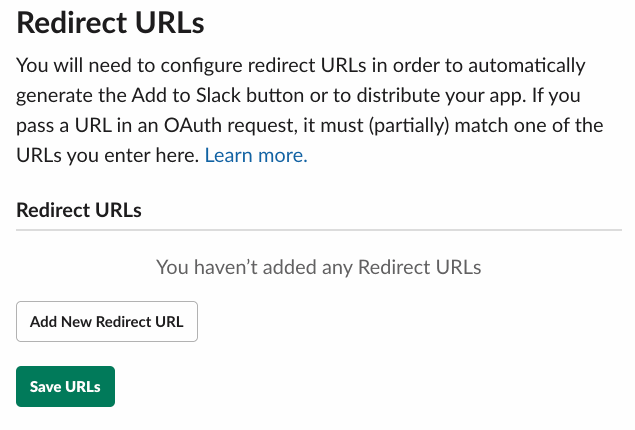
- Enable your Slack app in other workspaces. Under Settings > Managed Distribution > Share Your App with Other Workspaces, complete the listed steps to allow your Slack app to be installed by your customers.
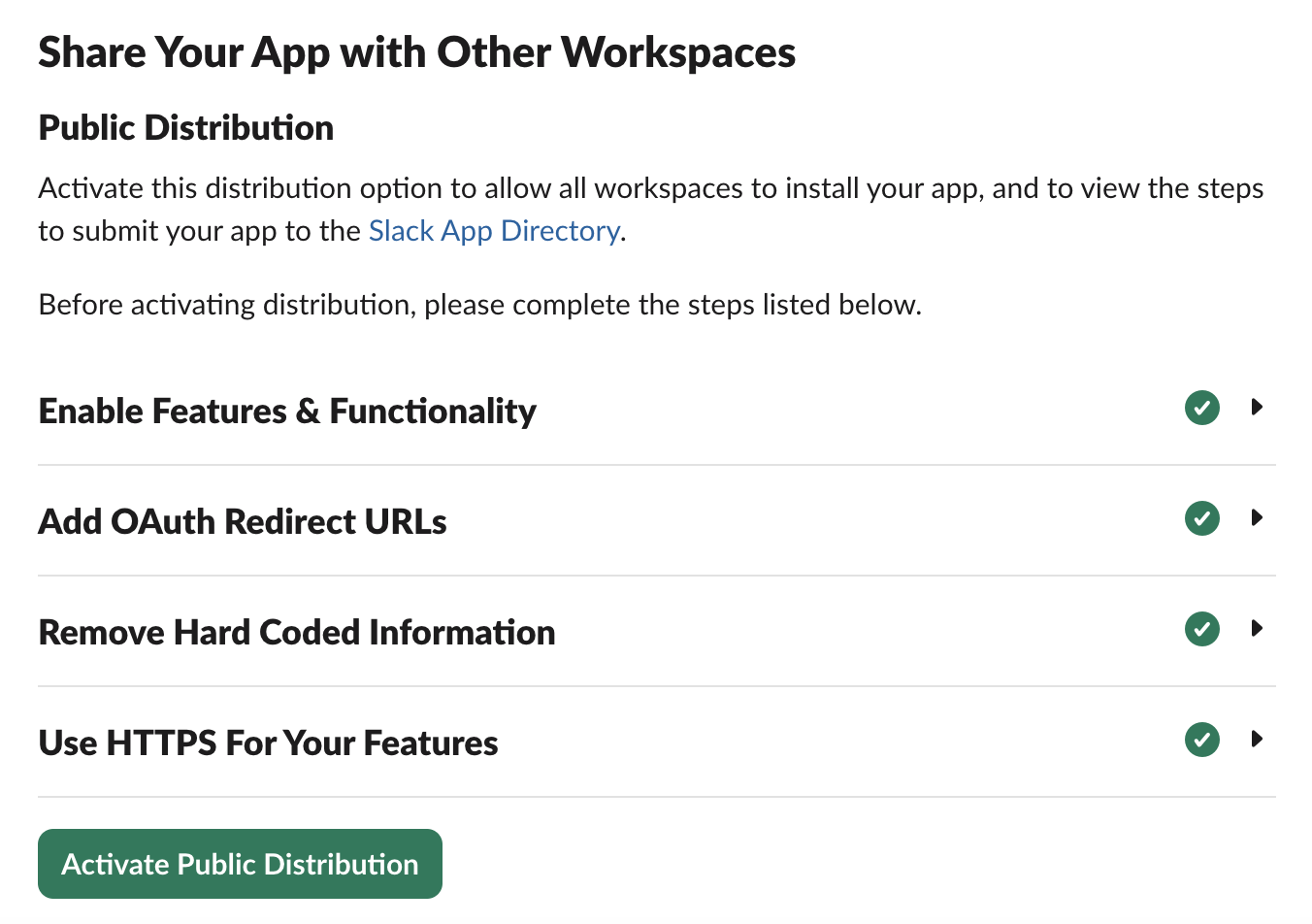
Add your Slack app to Paragon
- Select Slack from the Integrations Catalog.
- Under Integrations > Connected Integrations > Slack > Settings, fill out your credentials from the end of Step 1 in their respective sections:
- Client ID: Found under Basic Information > App Credentials > Client ID on your Slack App page.
- Client Secret: Found under Basic Information > App Credentials > Client Secret on your Slack App page.
- Permissions: Select the scopes you’ve requested for your application. For a list of recommended scopes, please view this integration within your Paragon dashboard. View dashboard.
Note: Leaving the Client ID and Client Secret blank will use Paragon
development keys.
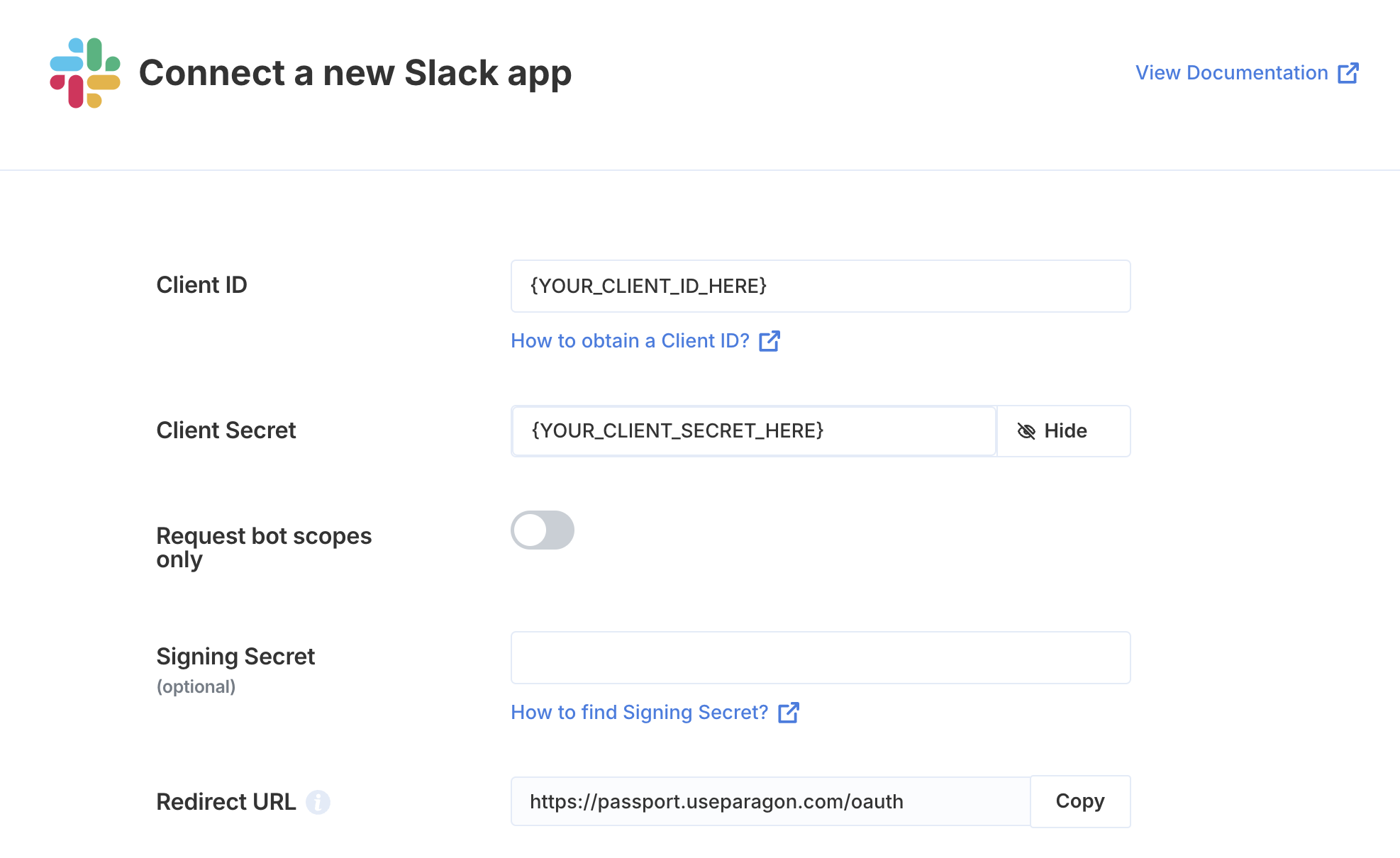
Bot and user permissions in Slack
Slack offers two different versions of permission for your Slack App. Bot scopes give your app’s bot permission to perform actions like posting messages or reading channels, acting as the bot itself. User scopes on the other hand, let your app perform actions on behalf of a real user, like accessing private channels or user-specific data. Use bot scopes for general automation and user scopes when you need to act with a user’s privileges. You’ll find the two categories in the OAuth & Permissions > Scopes section.Specifying bot and user tokens
You can specify in Paragon the type of token permission you’d like to use based on the workflow, action, or API request.- Under Integrations > Connected Integrations > Slack > App Configuration > Configure, you can enable the toggle to use bot scopes only
- While building Slack workflows an authorization option can be set for bot or user token

- During a Proxy API request add a
x-paragon-use-slack-token-typeheader as eitheruserorbot
Connecting to Slack
Once your users have connected their Slack account, you can use the Paragon SDK to access the Slack API on behalf of connected users. See the Slack REST API documentation for their full API reference. Any Slack API endpoints can be accessed with the Paragon SDK as shown in this example.Building Slack workflows
Once your Slack account is connected, you can add steps to perform the following actions.- Send Message in Channel
- Send Direct Message
- Get User by Email
- Search Messages
- Get Users by Name in Slack
{{ to invoke the variable menu.
Additionally, you can choose whether to send a message as a bot or your user. If you choose to send as a bot, you can choose to give your bot a custom name and icon.
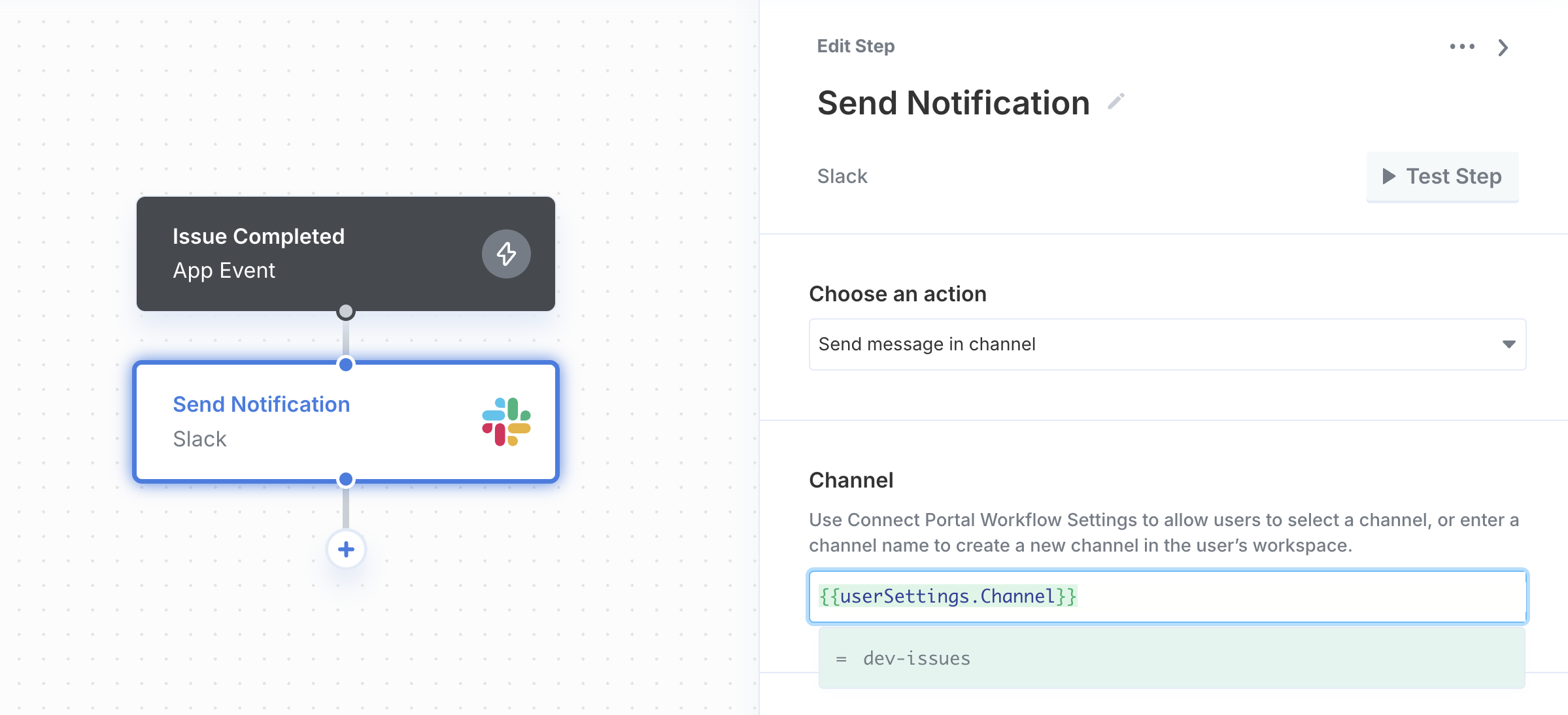
Using Webhook Triggers
Webhook triggers can be used to run workflows based on events in your users’ Slack account. For example, you might want to trigger a workflow whenever new messages are created in Slack to sync your users’ Slack messages to your application in real-time.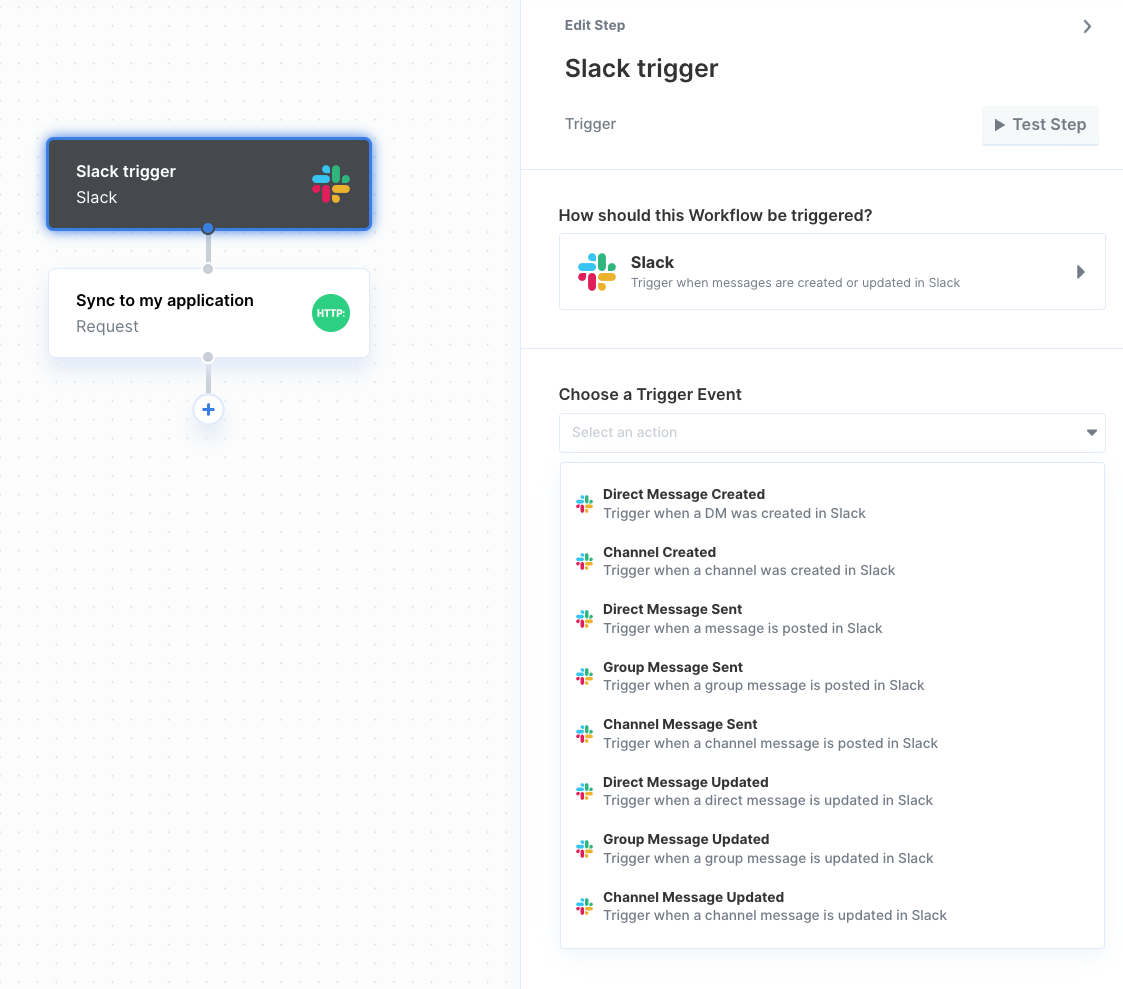
- Direct Message Created
- Channel Created
- Direct Message Sent
- File Deleted
- Group Message Sent
- Channel Message Sent
- Direct Message Updated
- Group Message Updated
- Channel Message Updated
- App Mentioned
- New Message Reaction
- Message Reaction Removed
- Message Interaction
Subscribing to Slack Events
Paragon provides a request URL to subscribe your Slack app to events in Slack. To add the request URL to your Slack app:- In the Settings tab of your Slack integration in Paragon, copy the link under “Webhook URL”.
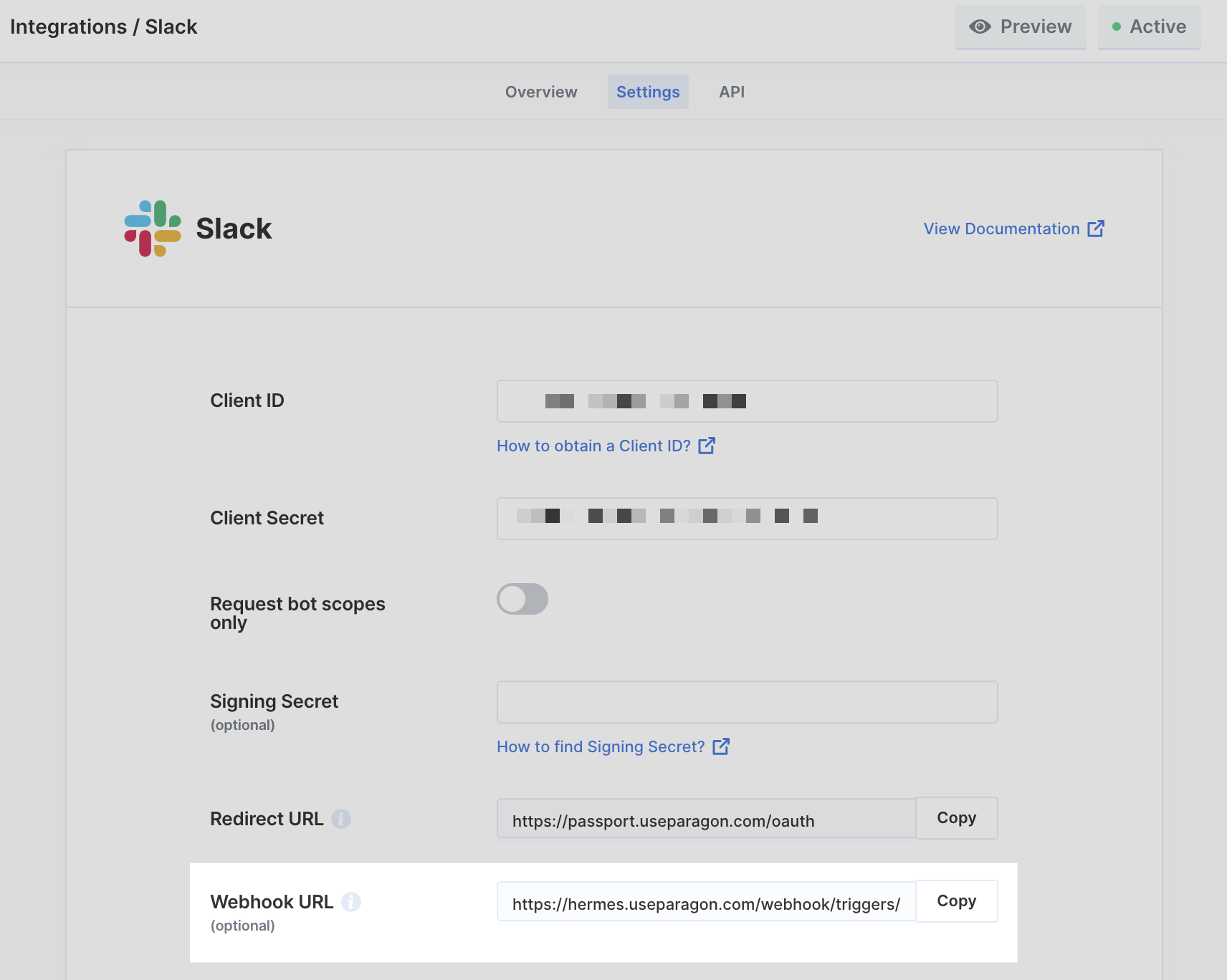
- Log in to your Slack App dashboard and select your Slack app.
- In your Slack App page sidebar, navigate to Event Subscriptions > Enable Events.
-
Provide the “Request URL.” Paragon will automatically respond to Slack’s
challengerequest and begin listening to events on behalf of your app. - Click Save Changes at the bottom of the Slack App dashboard.
